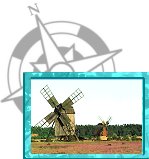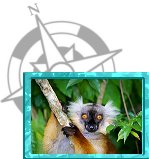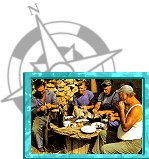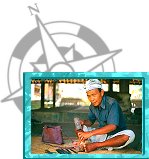With support from

|
|
|
| |
REGIONAL LINKS DIRECTORY
|
|
|
|
| |

Welcome to the GIN regional links directory.
The regional directory is categorised under nine major geographic regions. Each region contains
a list of websites specifically relating to the chosen region.
All websites listed here have been individually chosen based on their quality of content and
appropriateness to the specific region they represent. All links contained within this directory
are regularly checked to ensure they are currently available and do not lead to broken or missing
links. If you do happen to come across a broken link please let us know - email
our webmaster describing the
offending link and we promise to attend to it at our earliest opportunity.
|
|
|
|
ANTARCTIC
The world's coldest and most inaccessible region consists of an ice-covered continent, Antarctica, centred on the South Pole and surrounding this, the vast Southern Ocean, which is largely covered by floating pack ice. The Antarctic is much colder than the Arctic and its only inhabitants are visiting scientists. Various nations claim different parts of the Antarctic mainland. In 1959, twelve nations signed the Antarctic Treaty and agreed that Antarctica should be used for peaceful purposes only.
|
 | |
|
|
|
ARCTIC
The Arctic is an ocean more or less surrounded by land - just the opposite of the Antarctic, which is a huge land mass surrounded by water. The Arctic region generally refers to a rather large land area round the North Pole but the ocean is nearly five times as large as the Mediterranean and is covered with drifting ice which is sometimes 30m thick. Between Greenland and the Canadian mainland is Baffin Island, together with many smaller islands.
|
 | |
|
|
|
BALTIC
An inland sea of northern Europe, the Baltic is nearly 1,600km in length. It lies between Sweden on the west, Finland and the former USSR on the east, and Poland and Germany on the south. It has three main gulfs - the Gulf of Bothnia, the Gulf of Finland and the Gulf of Riga. Navigation in the Baltic has never been easy. The Danish channels and many of the harbours are too shallow for larger ships and wide areas are regularly frozen over for two months of the winter.
|
 | |
|
|
|
CARIBBEAN
The Caribbean Sea is bounded by the West Indies, the east coast of Central America and the north coast of South America. It is nearly 2,400km long and from 650 to 1,100km wide. The many islands surrounding the Caribbean are really the peaks of mountains submerged beneath the sea. After the completion of the Panama Canal in 1914, this sea became one of the busiest waterways in the world, lying on the main route between the Atlantic and Pacific oceans.
|
 | |
|
|
|
INDIAN OCEAN
This is the third largest ocean in the world - after the Pacific and Atlantic oceans - and covers an area of 73,555,715sq km. The Indian Ocean is bordered by Africa on the west, India on the north and Australia on the east, but to the south there is open sea as far as the Antarctic. The southern half of the Indian Ocean has no large islands except Madagascar. Those in the northern half include Sri Lanka and Socotra besides many smaller ones.
|
 | |
|
|
|
|
|
MEDITERRANEAN
 CPMR Intermediterranean Commission
CPMR Intermediterranean Commission
 Euro-Mediterranean Forum of Economic Research Institutes (FEMISE Network)
Euro-Mediterranean Forum of Economic Research Institutes (FEMISE Network)
 Euro-Mediterranean Information System on the know-how in the Water Sector
Euro-Mediterranean Information System on the know-how in the Water Sector
 Euro-Mediterranean Study Commission
Euro-Mediterranean Study Commission
 Euro-Mediterranean Think Tank (IPEMED)
Euro-Mediterranean Think Tank (IPEMED)
 EuroMed Transport Project
EuroMed Transport Project
 European Centre for Nature Conservation
European Centre for Nature Conservation
 European Coastal & Marine Union
European Coastal & Marine Union
 European Environment Agency
European Environment Agency
 European Environmental Bureau
European Environmental Bureau
 European Federation of Regional Energy & Environment Agencies
European Federation of Regional Energy & Environment Agencies
 European LEADER Association for Rural Development
European LEADER Association for Rural Development
 European Partners for the Environment
European Partners for the Environment
 European Travel Commission
European Travel Commission
 European Union On-Line
European Union On-Line
 Friends of the Earth Europe
Friends of the Earth Europe
 Global Mediterranean Action Network
Global Mediterranean Action Network
 Global Water Partnership - Mediterranean
Global Water Partnership - Mediterranean
 Hellenic Centre for Marine Research
Hellenic Centre for Marine Research
 Hellenic National Oceanographic Data Centre
Hellenic National Oceanographic Data Centre
 Institute for European Environmental Policy
Institute for European Environmental Policy
 Institute of the Mediterranean
Institute of the Mediterranean
 International Association for Mediterranean Forests
International Association for Mediterranean Forests
 International Centre for Advanced Mediterranean Agronomic Studies
International Centre for Advanced Mediterranean Agronomic Studies
 IUCN Centre for Mediterranean Cooperation
IUCN Centre for Mediterranean Cooperation
 Maritime Regions Cooperation for the Mediterranean
Maritime Regions Cooperation for the Mediterranean
 Marseille Center for Mediterranean Integration
Marseille Center for Mediterranean Integration
 Mediterranean Agronomic Institute of Chania, Crete
Mediterranean Agronomic Institute of Chania, Crete
 Mediterranean Association to Save the Sea Turtles
Mediterranean Association to Save the Sea Turtles
 Mediterranean Centre of Environment
Mediterranean Centre of Environment
 Mediterranean Coastal Foundation
Mediterranean Coastal Foundation
 Mediterranean Data Archaeology and Rescue [MEDAR/MEDATLAS II]
Mediterranean Data Archaeology and Rescue [MEDAR/MEDATLAS II]
 Mediterranean Dolphin Biology & Conservation
Mediterranean Dolphin Biology & Conservation
 Mediterranean Education Initiative for Environment & Sustainability
Mediterranean Education Initiative for Environment & Sustainability
 Mediterranean Experience of Ecotourism Network
Mediterranean Experience of Ecotourism Network
 Mediterranean Forest Association
Mediterranean Forest Association
 Mediterranean Hydrological Cycle Observing System
Mediterranean Hydrological Cycle Observing System
 Mediterranean Information Office for Environment, Culture & Sustainable Development
Mediterranean Information Office for Environment, Culture & Sustainable Development
 Mediterranean Institute for Nature and Anthropos
Mediterranean Institute for Nature and Anthropos
 Mediterranean Marine Bird Association [MEDMARAVIS]
Mediterranean Marine Bird Association [MEDMARAVIS]
 Mediterranean Models Evaluation Experiment (MEDMEX)
Mediterranean Models Evaluation Experiment (MEDMEX)
 Mediterranean NGO Network for Ecology & Sustainable Development
Mediterranean NGO Network for Ecology & Sustainable Development
 Mediterranean Oceanic Data Base
Mediterranean Oceanic Data Base
 Mediterranean Oil Industry Group
Mediterranean Oil Industry Group
 Mediterranean Platform of Artisanal Fishers
Mediterranean Platform of Artisanal Fishers
 Mediterranean Regional Marine Pollution Emergency Response Centre
Mediterranean Regional Marine Pollution Emergency Response Centre
 Mediterranean Regional Office of the European Forest Institute
Mediterranean Regional Office of the European Forest Institute
 Mediterranean Science Commission
Mediterranean Science Commission
 Mediterranean Scientific Association of Environmental Protection
Mediterranean Scientific Association of Environmental Protection
 Mediterranean Small Islands Initiative (PIM)
Mediterranean Small Islands Initiative (PIM)
 Mediterranean Wetlands Initiative
Mediterranean Wetlands Initiative
 Network of MPA Managers in the Mediterranean
Network of MPA Managers in the Mediterranean
 Observatoire Mediterraneen de l’Energie (OME)
Observatoire Mediterraneen de l’Energie (OME)
 Observatory on Tourism for Islands Economy
Observatory on Tourism for Islands Economy
 Secretariat of the Union of the Mediterranean
Secretariat of the Union of the Mediterranean
 Tethys Research Institute
Tethys Research Institute
 The Blue Plan: Environment and Development in the Mediterranean Region
The Blue Plan: Environment and Development in the Mediterranean Region
 The MedPartnership
The MedPartnership
 UNEP Mediterranean Action Plan
UNEP Mediterranean Action Plan
 UNEP Mediterranean Information and Communication Regional Activity Centre
UNEP Mediterranean Information and Communication Regional Activity Centre
 UNEP Priority Actions Programme Regional Activity Centre
UNEP Priority Actions Programme Regional Activity Centre
 UNEP Specially Protected Areas Regional Activity Centre
UNEP Specially Protected Areas Regional Activity Centre
|
 | |
|
|
|
NORTH ATLANTIC
The northern half of the world's second largest ocean is rich in islands, varied coastline and tributary seas. On the west are the Caribbean, the Gulf of Mexico, the Gulf of St. Lawrence, Hudson Bay and Baffin Bay. To the east are the Mediterranean, the Black Sea, the North Sea and the Baltic Sea. As well as purely oceanic islands there are those which rise from the Mid-Atlantic Ridge, including the Azores. Other islands such as The Canaries and Madeira rise from Africa's continental margins.
|
 | |
|
|
|
PACIFIC
The Pacific is the largest and deepest of all the oceans with an area of 165 million square kilometres, an area greater than that of all the world's lands put together. At its greatest width the Pacific measures 17,220km. It extends from the Bering Straits of the Arctic Circle, to Cape Adare, Antarctica, a distance of 15,450km. There are very few islands in the eastern Pacific. Its northern and western borders are fringed with chains of islands including The Aleutians, The Kurils and the Ryukus. The Inner Pacific islands are divided into three main groups - Melanesia, Micronesia and Polynesia.
|
 | |
|
|
|
SOUTHEAST ASIA
Southeast Asia is the name for the peninsular area of the Asian continent that lies between India and China, and stretches south along a chain of islands towards Australia. The countries of mainland Southeast Asia are Malaysia, Burma, Vietnam, Laos, Kampuchea, Thailand and Singapore. Further south lies insular (island) Southeast Asia. This is made up of thousands of islands containing the countries of the Philippines, Brunei, Indonesia and East Timor.
|
 | |
|
|
|